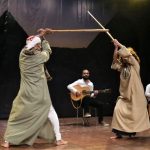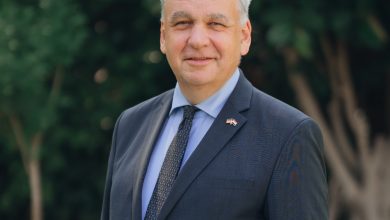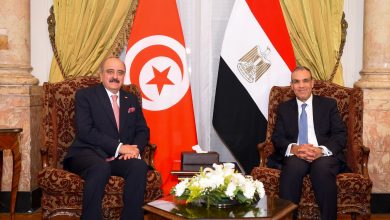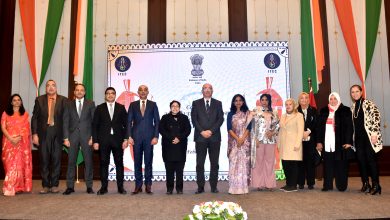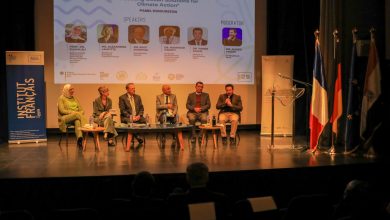In an Egyptian-Italian folklore concert and an interactive animation exhibition at the National Museum of Egyptian Civilization
The Grand Theater of the National Museum of Egyptian Civilization in Fustat hosted a folkloric concert of the Egyptian Tahtib art and the Italian Tarantella under the title: “Enjoy the heritage…a digital bridge between Egypt and Italy”, which is organized by the museum in cooperation with the Italian Embassy in Cairo, in the presence of Dr. Ahmed Ghoneim, CEO of the Museum Authority. And Ambassador Michael Quaroni, Ambassador of Italy in Cairo.
The ceremony was attended by a number of diplomatic and public figures, and lovers of art, music and heritage, including Counselor Mohamed Sherine Fahmy, and many former ministers and ambassadors of foreign countries in Cairo.
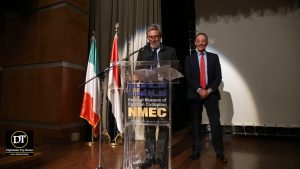
The ceremony began with a speech delivered by Dr. Ahmed Ghoneim, during which he welcomed the attendees and guests of the museum, expressing his happiness to host this ceremony, which comes within the cultural and artistic program of the museum during the 2023 season, which will witness the organization of many cultural, artistic and educational events that enhance the community and awareness role of the museum.
He also appreciated the CEO of the museum for cooperating with the Italian Embassy in Cairo, organizing this ceremony, and the role of the Italian Cultural Center and the private sector in supporting and sponsoring the ceremony, and highlighting the importance of the intangible heritage of Egypt and Italy, and the historical and cultural ties between the two countries, pointing to the role of The museum and its constant keenness to cooperate with embassies and diplomatic bodies in Egypt, to achieve cultural exchange between Egyptians and other peoples, and to introduce Egyptian and foreign visitors to the museum to the ancient civilization of Egypt, which dazzles the world.
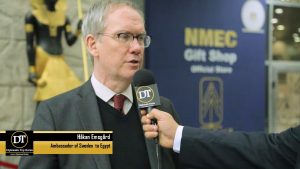
During his speech, Ambassador Michael Quaroni, Ambassador of Italy to Cairo, expressed his great appreciation for the effort made, stressing the importance of this fruitful cooperation between the museum and the embassy, and the organization of this celebration in a manner befitting this great cultural edifice, which has become one of the most important cultural projects in the world.
The celebration included paragraphs for Egyptian tahtib and Italian tarantella performances, which are characterized by a mixture of Egyptian and Italian folklore presented by the Italian artist Luisa Russo and the Egyptian artist Hani Hassan, in addition to a variety of the most famous Egyptian folkloric dances, which the Rida band is famous for, which expresses the Egyptian culture.
In the same context, and on the sidelines of the folklore ceremony, Dr. Ahmed Ghoneim and Ambassador Michael Quaroni inaugurated an interactive exhibition of two-dimensional digital animation and three-dimensional interactive virtual reality, in the Egyptian Textile Hall of the Museum.
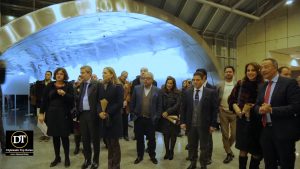
Dr. Ahmed Ghoneim explained that the exhibition will last for two weeks, during which the visitor can take a virtual trip and learn about the cultural and heritage sites and the most charming cities in Italy and Egypt.
Pointing out that the exhibition aims to enhance the importance of cultural heritage and highlight the affinities between the ancient Egyptian civilization and the Roman civilization, which had a great impact on Egyptian society and art during the Roman era in Egypt, as well as the arts that spread in Italy during the Middle Ages and the Renaissance, whose impact extended to Egypt and appeared clearly in the buildings and facilities in Khedivial Cairo during the nineteenth and early twentieth centuries.
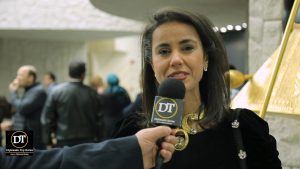
The exhibition also includes a collection of photographs expressing Italian culture and heritage.
At the end of the ceremony, the attendees toured the central hall and the Egyptian textile hall in the museum, through which they learned about the unique archaeological holdings from different eras, which are displayed using the latest methods and techniques of modern museum display.
